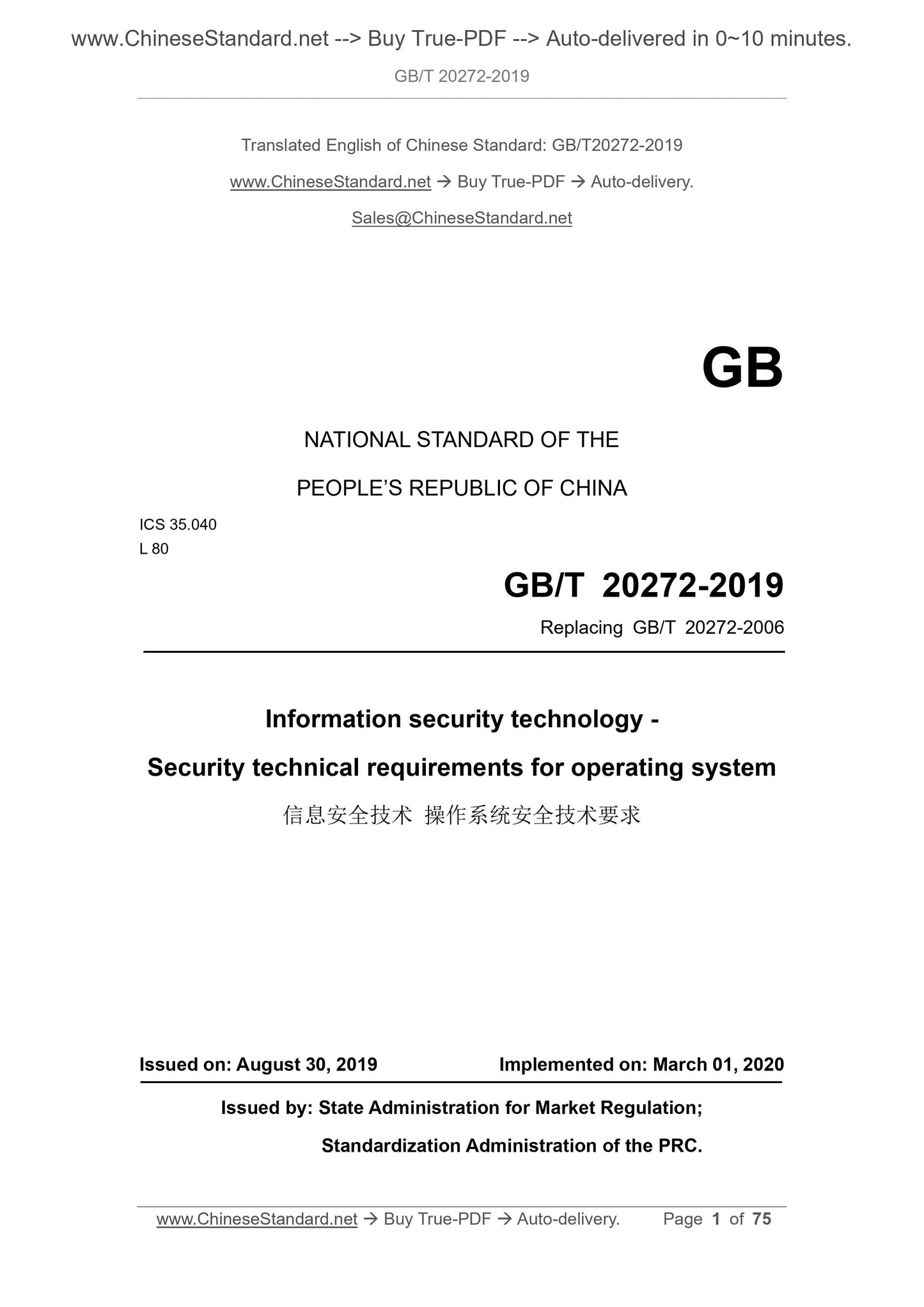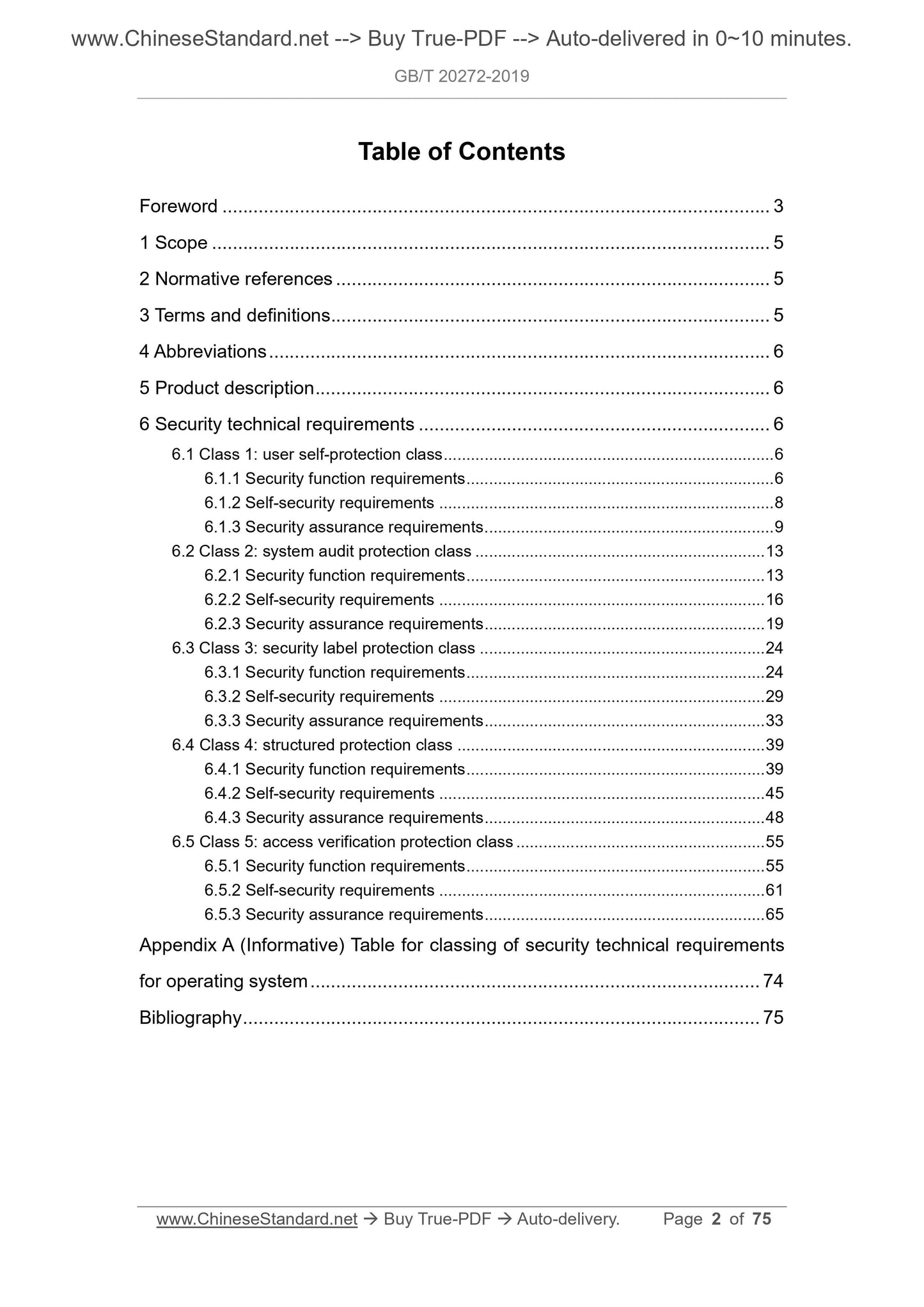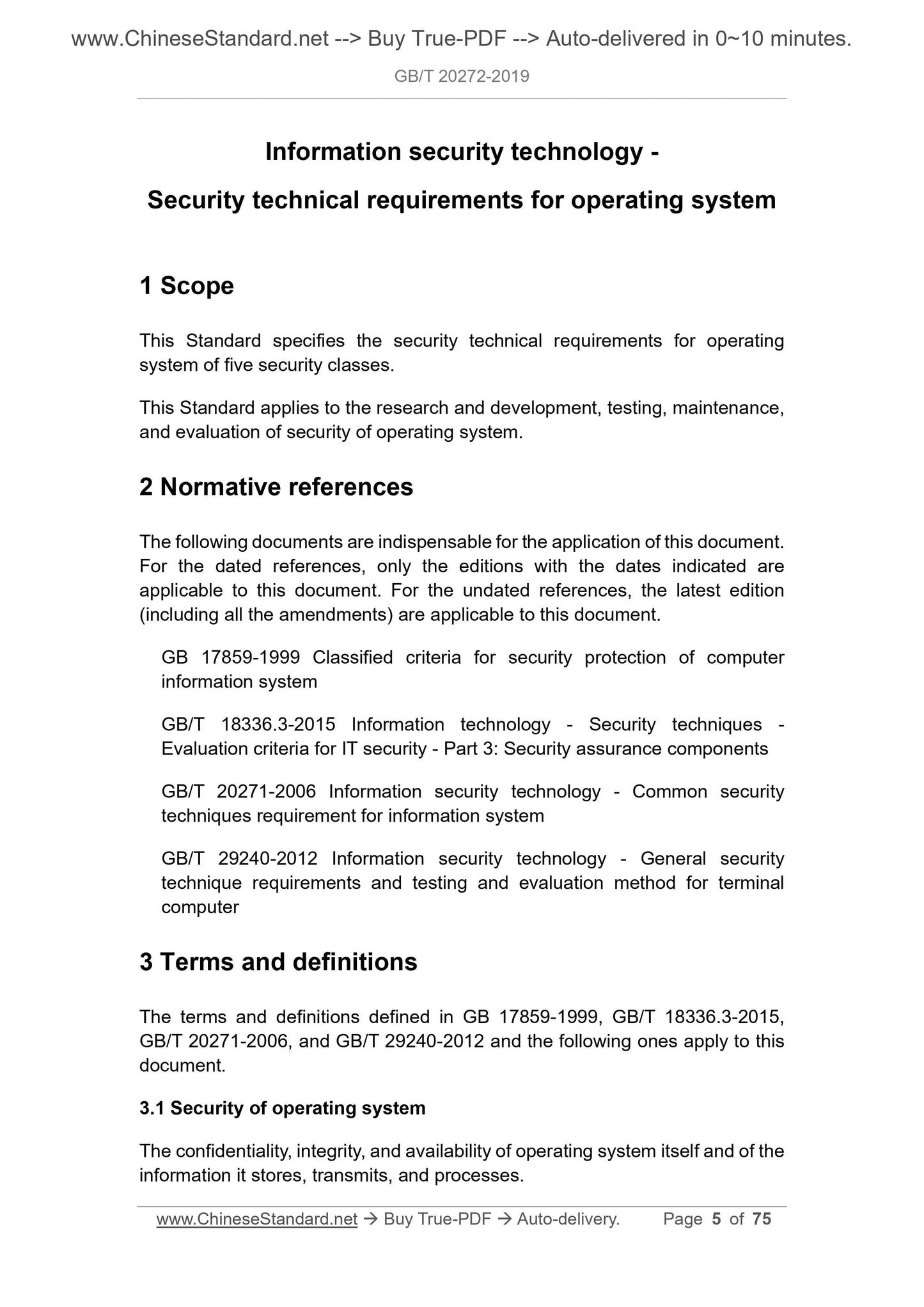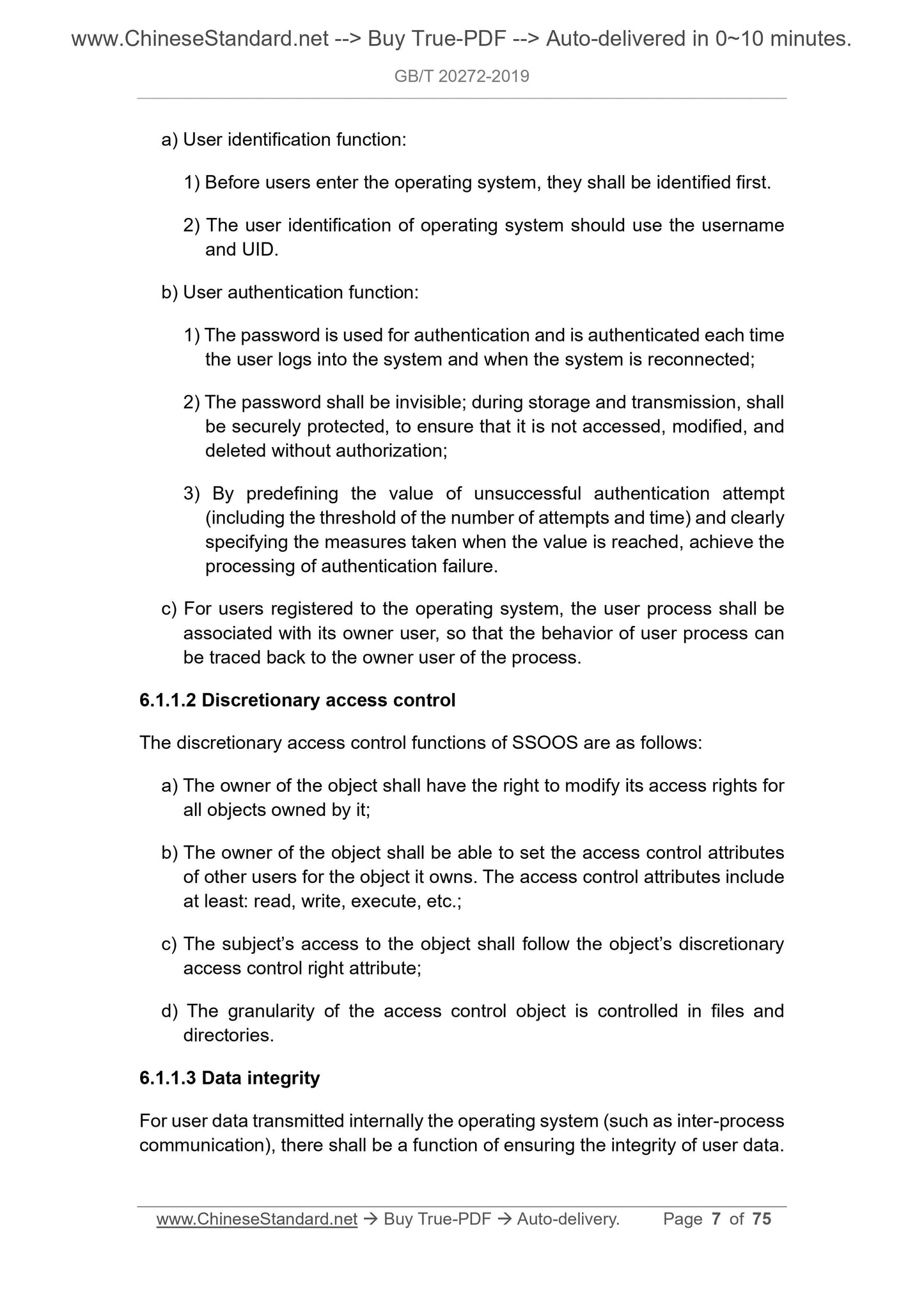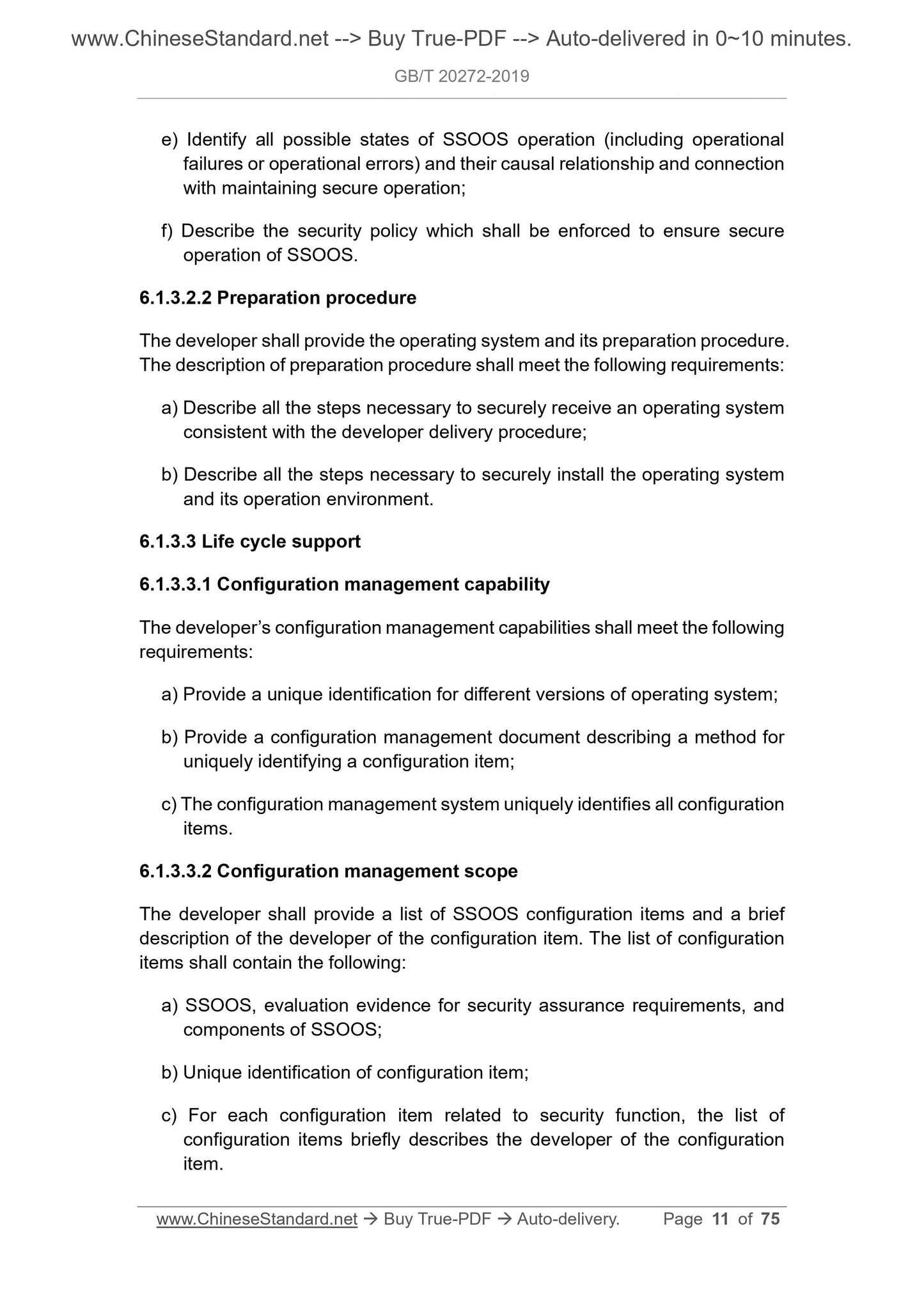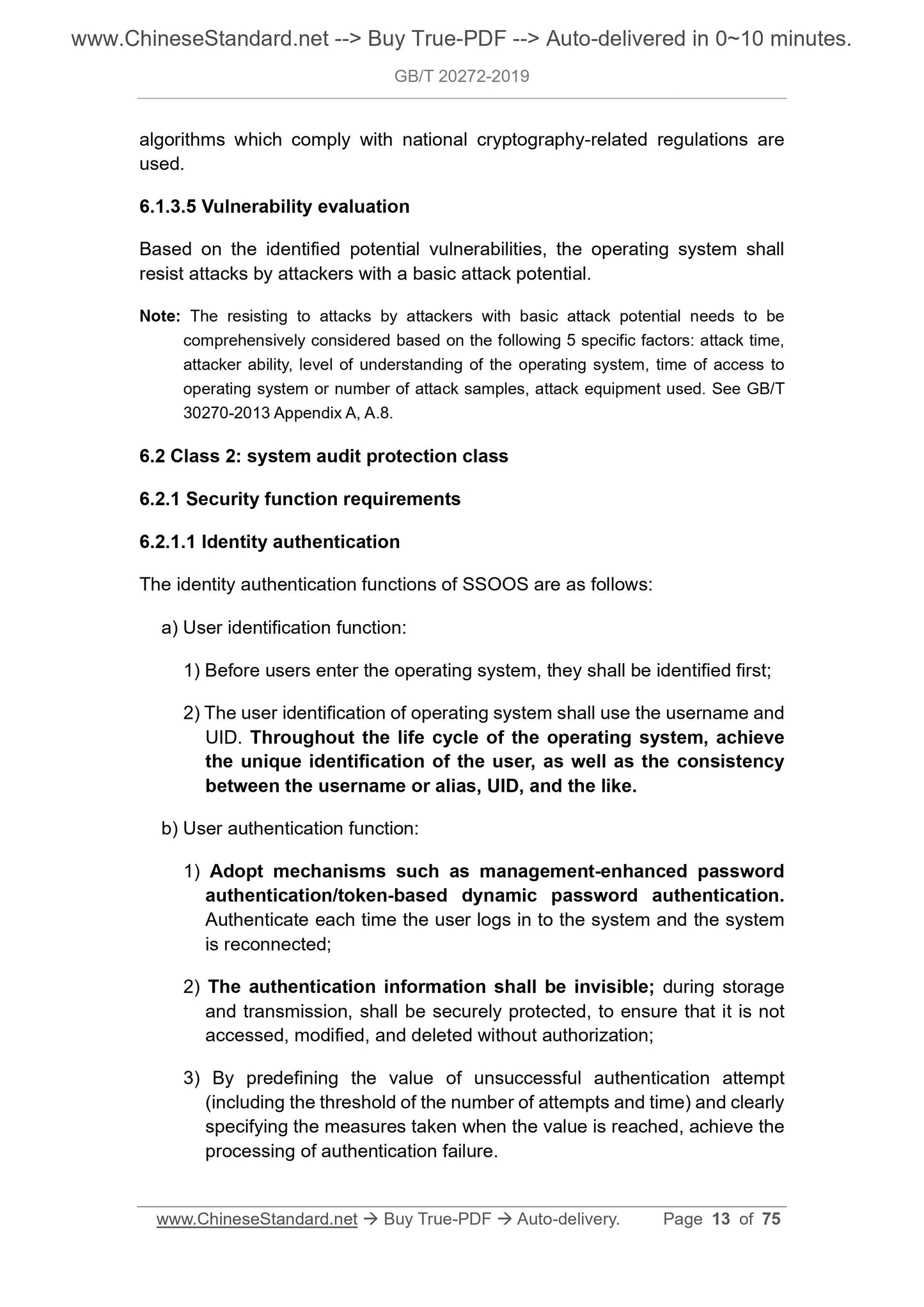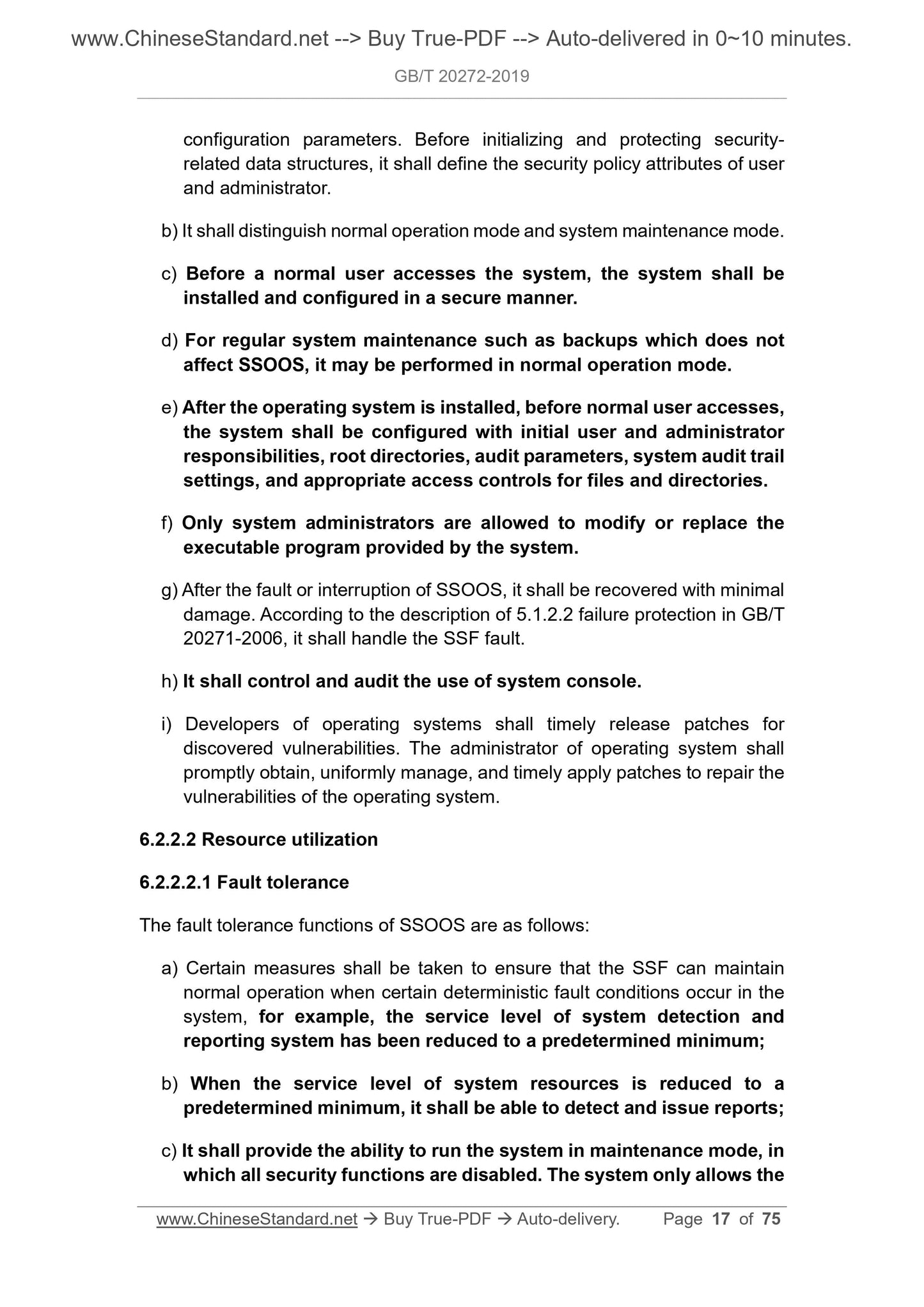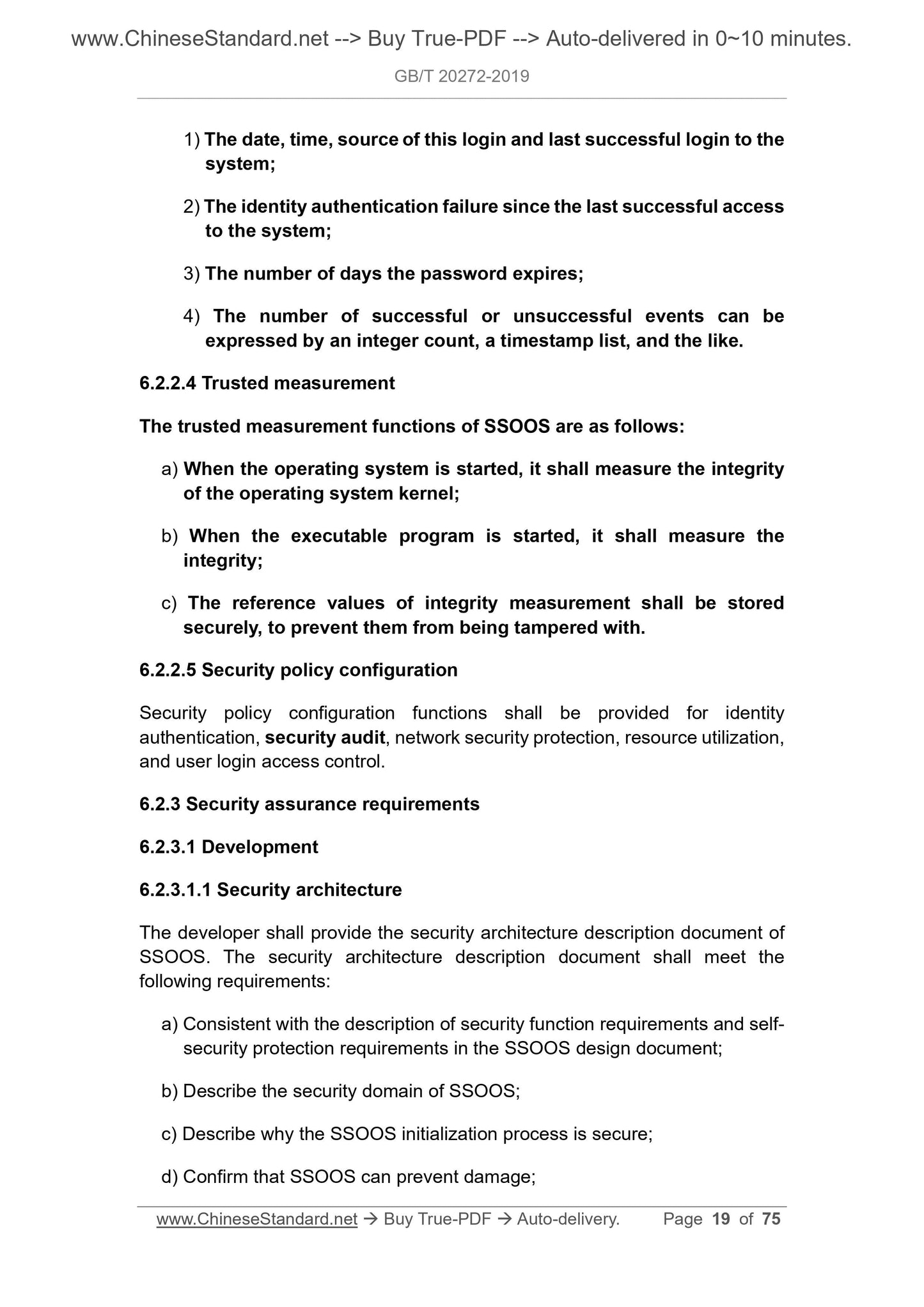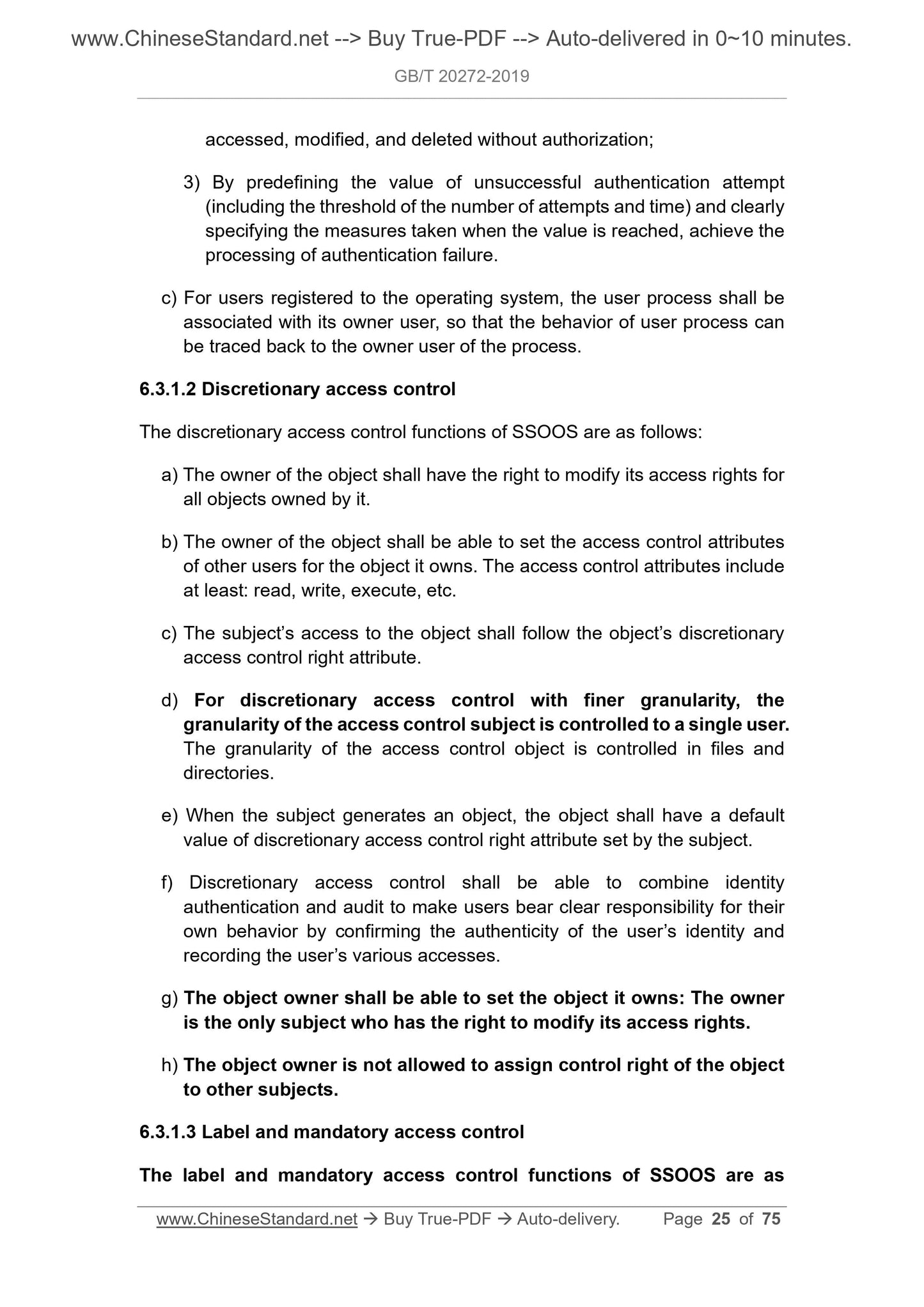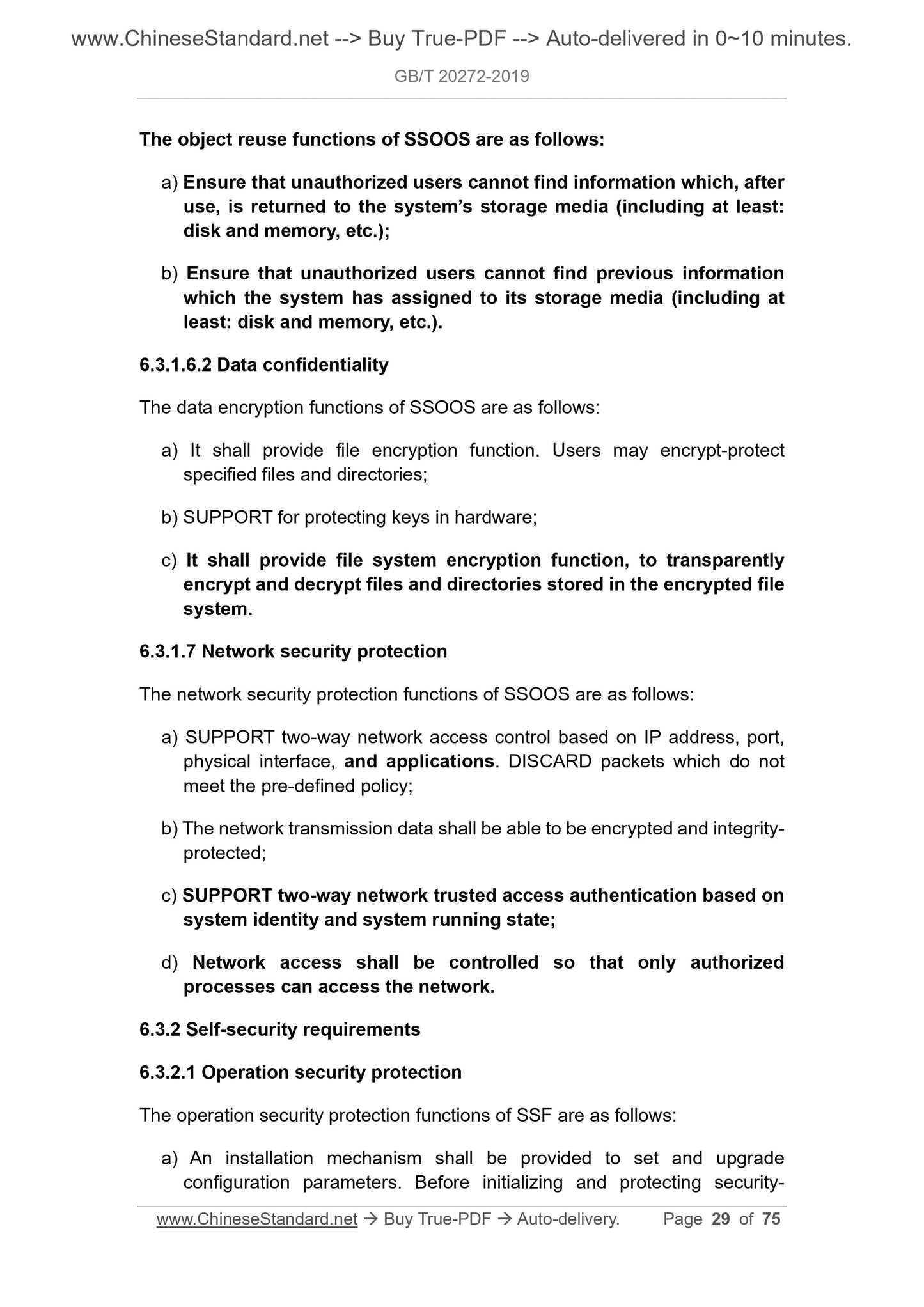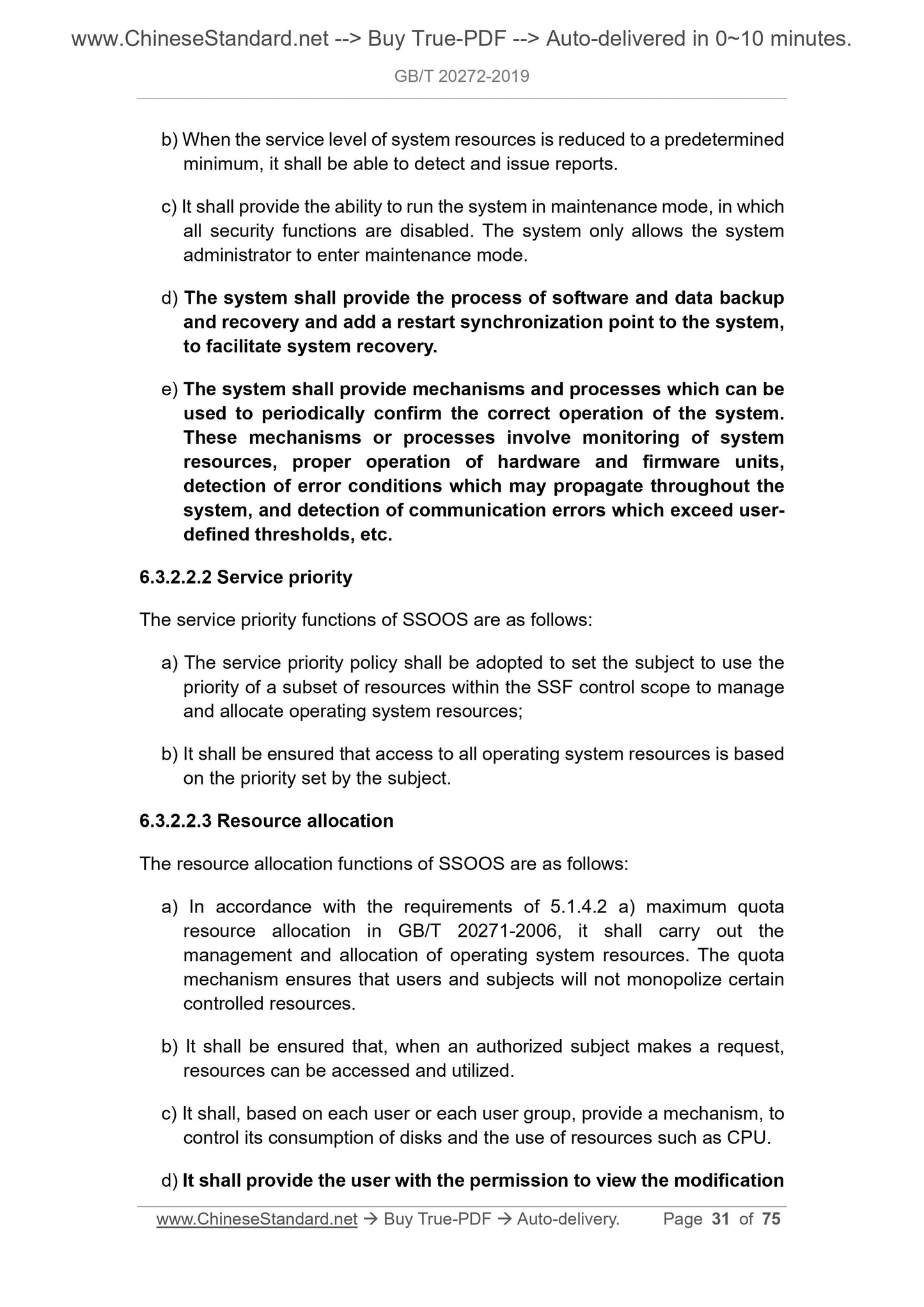1
/
of
12
www.ChineseStandard.us -- Field Test Asia Pte. Ltd.
GB/T 20272-2019 English PDF (GB/T20272-2019)
GB/T 20272-2019 English PDF (GB/T20272-2019)
Regular price
$350.00
Regular price
Sale price
$350.00
Unit price
/
per
Shipping calculated at checkout.
Couldn't load pickup availability
GB/T 20272-2019: Information security technology - Security technical requirements for operating system
Delivery: 9 seconds. Download (and Email) true-PDF + Invoice.Get Quotation: Click GB/T 20272-2019 (Self-service in 1-minute)
Newer / historical versions: GB/T 20272-2019
Preview True-PDF
Scope
This Standard specifies the security technical requirements for operatingsystem of five security classes.
This Standard applies to the research and development, testing, maintenance,
and evaluation of security of operating system.
Basic Data
| Standard ID | GB/T 20272-2019 (GB/T20272-2019) |
| Description (Translated English) | Information security technology - Security technical requirements for operating system |
| Sector / Industry | National Standard (Recommended) |
| Classification of Chinese Standard | L80 |
| Classification of International Standard | 35.040 |
| Word Count Estimation | 42,429 |
| Date of Issue | 2019-08-30 |
| Date of Implementation | 2020-03-01 |
| Older Standard (superseded by this standard) | GB/T 20272-2006 |
| Quoted Standard | GB 17859-1999; GB/T 18336.3-2015; GB/T 20271-2006; GB/T 29240-2012 |
| Issuing agency(ies) | State Administration for Market Regulation, China National Standardization Administration |
| Summary | This standard specifies the security technical requirements for operating systems with five security levels. This standard applies to the development, testing, maintenance and evaluation of operating system security. |
Share
